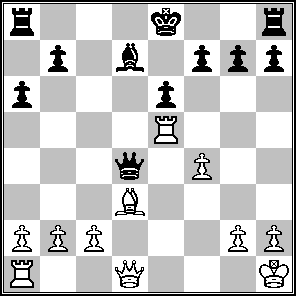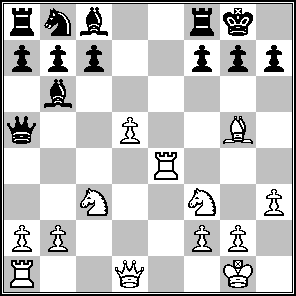White to move

The problems in this text are organized by theme, so the solver immediately knows that a discovered attack figures into the solution. In this position, the only conceivable discovery is against the queen, so the bishop must be able to move with check. Thus, 1.Rxe6+! If 1...Bxe6, then 2.Bb5+ wins the queen for a bishop and rook, and Black's pawn structure is compromised. If 1...fxe6, then Bg6+. However, the king can move. To Reinfeld's credit, he gives the lines just mentioned and offers, "Black must move his king, remaining with a decidedly inferior game" (213).
The next problem in the text is more typical of the sort of suboptimal moves that pepper the solutions.
White to move

There is a discovery after Reinfeld's line: 1.Be7 Re8 2.Bb4 threatening both checkmate and the queen. But Black has other options. When I played this position against Hiarcs 10 a few months ago, the engine replied to 1.Be7 with Bxf2+. After 2.Kxf2 Re8 3.Bb4 Qb6+ saves the queen at the cost of a bishop. White still has a winning advantage, but the position is less one-sided than in Reinfeld's solution. Against the engine, I was able to achieve only a draw.
This morning I played the position again, but against a newer version of Hiarcs. Hiarcs 12 played 1...f5. That game continued 2.Ra4 Bxf2+ (still the bishop sacrifice) 3.Kxf2 Qb6+ 4.Kf1 Rf7 and this time I went on to win, showing improvement on may part.













No comments:
Post a Comment